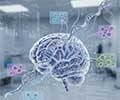Ancillary Tests.
Chest Roentgenogram.
Cardiomegaly, cardiothoracic ratio IMAGE 0.5 on an anteroposterior chest radiograph is common finding in HF patients. Pulmonary edema is marked by equalization of the caliber of blood vessels in the apex and the lung bases (cephalization of blood flow), interstitial edema (development of Kerley’s B lines, sharp linear densities of interlobular interstitial edema), and alveolar edema (central butterfly or cloudlike appearance of fluid around the hili).
Laboratory Tests.
Laboratory testing in a patient with a new HF diagnosis should include an electrocardiogram, complete blood count, urinalysis, serum creatinine, potassium, and albumin levels, and thyroid studies (T4, TSH). Screening evaluation for arrhythmias using Holter monitoring is not routinely warranted.
Echocardiography.
Echocardiography has become an established diagnostic test for defining the cause and severity of HF, but it remains an underutilized procedure in the primary care setting. Echocardiography should be performed




Comments
what is the explanation for orthopnoea in CCF
FOR BEST INFORMATION ABOUT ACNE TREATMENTS.
Physical inactivity is a major risk factor for heart disease and stroke and is linked to cardiovascular mortality. Regular physical activity can help control blood lipid abnormalities, diabetes and obesity. Aerobic physical activity can also help reduce blood pressure. The results of pooled studies show that people who modify their behavior and start regular physical activity after heart attack have better rates of survival and better quality of life. Healthy people as well as many patients with cardiovascular disease can improve their fitness and exercise performance with training.
http://www.insideheart.com/
very informative article !!!